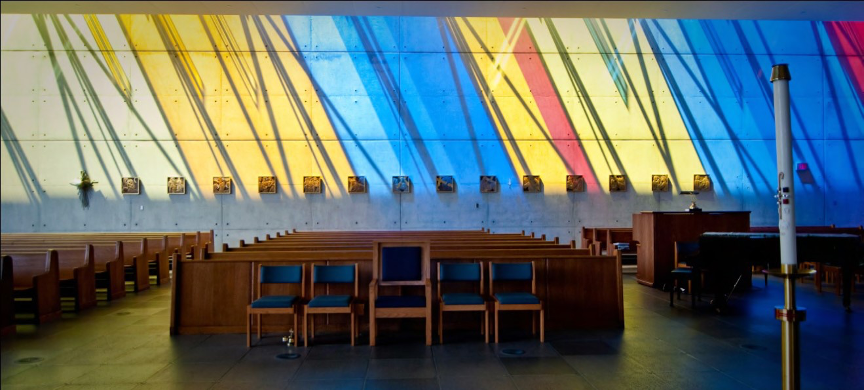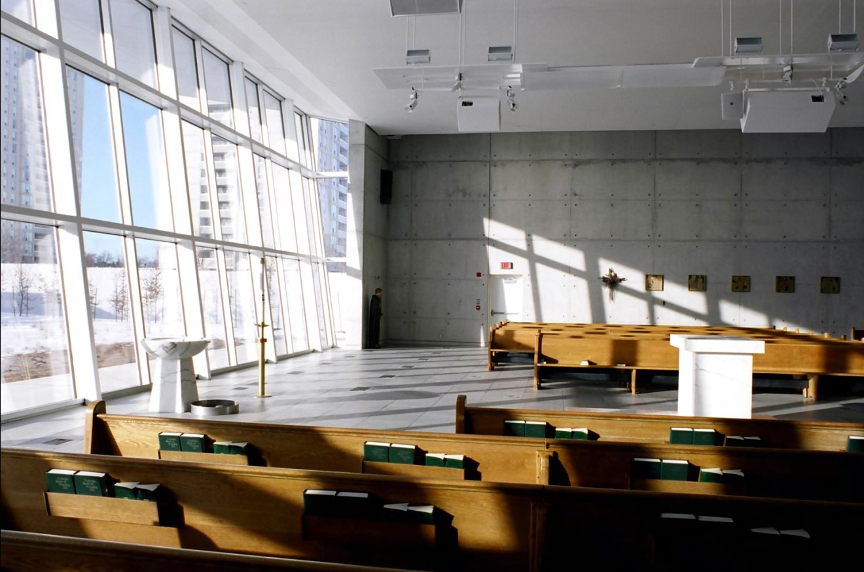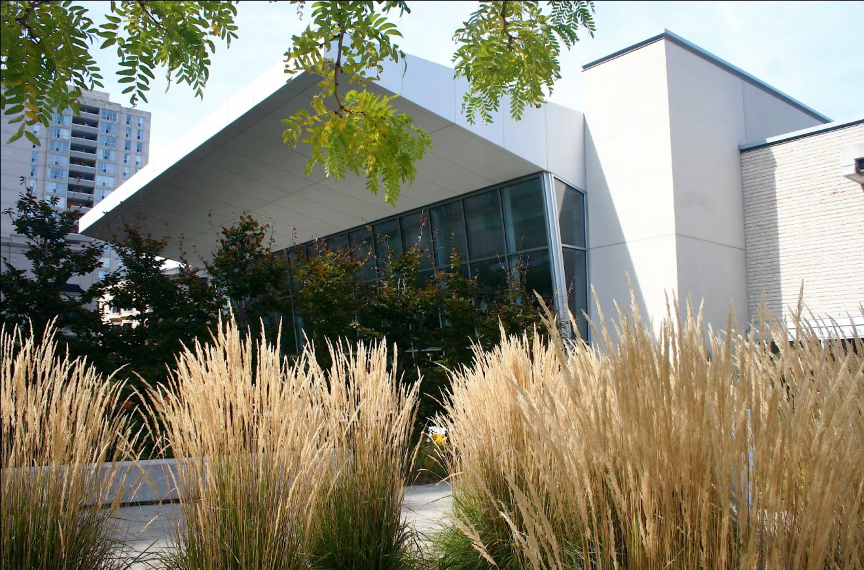Roberto Chiotti
Larkin Architect Limited and Guest Faculty at the Institute Without Boundaries, Toronto (Canada) roberto@larkinarchitect.com (email)
www.larkinarchitect.com (webpage)
Introduction
We come together as members of the ACS because of our commitment as educators in the fields of art and architecture, and because of our shared passion for seeking ways to comprehend, articulate, and give concrete expression to the sacred. My hope is we are also becoming aware that there is a sense of urgency about our current situation. As we observe the consequences of global warming and climate change, we are discovering that we must make fundamental changes to the way in which we relate to the earth if our children and indeed the children of all living species are going to have a future worth inheriting. In order to successfully accomplish this seemingly overwhelming task, we must first come to understand why our current cosmology in the west is dysfunctional and therefore incapable of successfully leading us out of our current challenges, and why, according to cultural historian Thomas Berry, embracing a functional cosmology based upon the Universe story is the means by which we can achieve a mutually enhancing, human-earth relationship.[1]
Challenging the Pre-suppositions of our Current Cosmology
Thomas Berry advises that the main reason we find ourselves in such ecological chaos is that we are in between stories.[2] We are out of touch with our true and larger Self. The dominant western world-view remains rooted in an old Cosmology based upon the Biblical creation narratives of Genesis that established human exceptionalism and our dominion over the rest of creation as its sacred “a priori” values even as a new scientific/spiritual creation story is being articulated that can be understood as the basis for “the new cosmology…a new sacred story”, one that all humans can embrace as a common narrative to inspire and energize our journey forward into a sustainable future.
Michael Dowd in his book Earthspirit argues that the development of all of our western institutions…economics, politics, law, medicine, education, and so on, has been guided by the old cosmology’s foundational presuppositions.[3] He explains that one way of describing the history of the West can be understood as developing the necessary technologies required to transcend the human condition. Thomas Berry would describe this as the millennial myth…our desire to bring into being “Wonderworld”.[4] We got tired of waiting for God to reappear and decided to take on the task of restoring the perfection that was promised at the end of time. Our entire consumer oriented existence is the means by which this is to be accomplished. The natural world has been exploited as a limitless source of raw materials for our technological processes and similarly, as a limitless repository for the waste by-products of those same processes.
As Thomas Berry Advises, “It’s all a question of story. We are in trouble just now because we are in between stories. The Old Story, the account of how the world came to be and how we fit into it, sustained us for a long time. It shaped our emotional attitudes, provided us with life purpose, and energized action… Today however, our traditional story is no longer functioning properly, and we have not yet learned the New Story.” [5]
Embracing the Scientific Story of the Universe as a Common Sacred Story
Western science, which itself emerged out of this old cosmology, is now giving birth to a new empirically observed, 15 billion year creation story, a new cosmology that defines the Universe Story as a sacred reality, as the primary revelatory experience of the Divine.
According to Warwick Fox, modern science can be seen as providing an account of creation that is the equal of any mythological, religious, or speculative philosophical account in the terms of scale, grandeur, and richness of detail.[6] More specifically, modern science is providing an increasingly detailed account of the physical and biological evolution of the universe story that compels us to view reality in a single unfolding process…what Berry describes as “cosmogenesis”.[7]
Scientific research has uncovered a set of creative principles that have guided this process of cosmogenesis from the beginning defining the reality, meaning, and direction in which the Universe is going. Thomas Berry identifies these principles as differentiation (or diversity), interiority (or personality), and communion (or interrelationship).[8]
“Differentiation” is the primordial expression of the universe. It is the dynamic within the evolutionary process that leads to an increasing complexity and variety of expressions. From its beginnings in hydrogen to the incredible bio-diversity that we find on the earth today, the universe has been coded to become increasingly more complex and differentiated.
The second primary creative principle of the universe is that of increased “Subjectivity”. Together, every reality that makes up a part of the universe is not just a collection of objects but is a community of subjects. As subjects, all realities that make up the universe, from individual atoms to individual persons to individual solar systems to individual galaxies has an inner dimension, an interior reality that not only reflects the diversity that surrounds us but reflects the original bursting forth of energy at the beginning of time.
“Communion” is that principle which acknowledges that everything in the universe is interdependent with everything else in the universe in an unbroken bond of genetic interrelatedness. The original bursting forth of energy at the beginning of time contained all the elements necessary for the evolution of the universe, up to and including human culture.
Today, a growing number of scientists and theologians are saying that we will realize our destiny only to the degree that we learn to live out our knowledge of our true identity, surrender our anthropocentrism, and come into harmony with these fundamental principles of the universe.
St. Gabriel’s Passionist Parish, Toronto: Inviting Transformation towards the New Cosmology
In designing the new replacement church for the St. Gabriel’s Passionist Parish in Toronto, Canada, the parish building committee sought to demonstrate how it could respond to this imperative in a tangible, realistic, and meaningful way. In contrast to the original church which was inwardly focused and employed stained glass to create an other-worldly liturgical environment, the entire south facade of the worship space at the new St. Gabriel’s is glazed with clear glass in order to harness the winter sun’s energy and to extend the sacred space of the worship area into the sacred space of the world beyond, emphasizing that when we gather to worship, we do so within the greater context of creation: the primary revelatory experience of the divine. As such, the projecting canopy, glazed south facade, and adjacent garden replace the traditional steeple tower and peaked roof as iconic features of a new church typology. The remaining three walls of exposed concrete serve as a constantly changing canvas for the dynamic play of natural light that is filtered by the coloured glass panels of the continuous perimeter skylight and further fractured by wall mounted dichroic coated reflectors. In effect, the cosmos shapes the liturgical environment and participates in the ritual action of the liturgy. Similarly, time also takes on a cosmic dimension with the Earth’s daily rotation and orbit around the sun. Seasonal influences on the sun’s intensity and inclination, together with the daily diversity of weather conditions ensure that not two gatherings of worshippers will experience an identical liturgical environment. As a LEED™ Gold certified building, the entire building process from design through to construction and post-occupancy has been researched and rethought to embrace and reflect the values of a new cosmology that seek to mitigate the impacts of climate change. As such, the new building as sacred space redefined presents a “Gestalt whole”, becoming itself a form of catechesis, engaging a dialogue between old values and new… inviting us to transformation.

Interior view of St Gabriel’s worship space “shaped” by the effects of natural light filtered through David Pearl’s coloured glass panels of the perimeter skylight. The effect is likened to stained glass on a “cosmic” scale. Photo by Michelle Hotchins.

The entire south wall of the worship space overlooks the sacred space of the garden beyond and passively harvests the winter sun’s energy. Photo by Steve Evans.

The projecting canopy, glazed south facade, and adjacent garden replace the traditional steeple tower and peaked roof as iconic features of a new church typology. Photo by Roberto Chiotti.
[1] Thomas Berry, The Great Work: Our Way into the Future (New York: Bell Tower, 1999) p. ix; p. 11
[2] Thomas Berry, The Dream of the Earth (San Francisco: Sierra Club Books, 1990) p. 123
[3] Michael Dowd, Earth Spirit: A Handbook for Nurturing and Ecological Christianity (Mystic CT: Twenty-‐Third Publications, 1991) pp. 9-‐10
[4] Op cit. p. 7
[5] Thomas Berry, The Dream of the Earth (San Francisco: Sierra Club Books, 1990) p. 123
[6] Warwick Fox, Toward a Transpersonal Ecology: Developing New Foundations for Environmentalism (Boston: Shambhala Publications, 1990)
[7] Thomas Berry, The Great Work: Our Way into the Future (New York: Bell Tower, 1999) pp. 163-‐164
[8] Thomas Berry, The Dream of the Earth (San Francisco: Sierra Club Books, 1990) p.45



